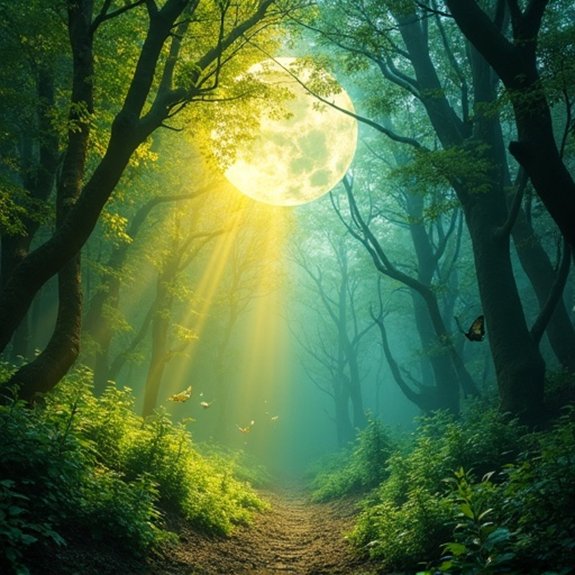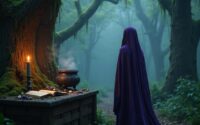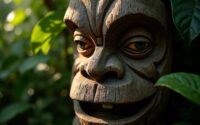The Faery Courts: Seelie & Unseelie
The ancient divide between the Seelie and Unseelie Courts has shaped centuries of folklore across Celtic lands. These opposing faery factions don’t just represent good versus evil—they’re reflections of humanity’s own dual nature. While one court’s known for playful tricks and occasional kindness, the other’s earned a darker reputation. But what first sparked this supernatural split, and why do encounters with these beings still surface in modern accounts?
Introduction

When most people think of faeries, they’re picturing tiny winged creatures from children’s stories, but the fae of Celtic mythology are far more complex and dangerous beings who’ve organized themselves into two distinct courts. The Seelie and Unseelie Courts represent opposing forces within faery society, each wielding immense power and following different moral codes. These ancient divisions shape how the fae interact with humans and each other. The Seelie Court’s generally considered benevolent, though they’re still capable of mischief and demand respect. The Unseelie Court’s openly malevolent, delighting in causing harm to mortals who cross their paths. Understanding these courts isn’t just academic curiosity—folklore warns that knowing the difference could save one’s life when encountering the fae in their domain or ours.
Celtic Mythology’s Earliest Mentions
Although the terms “Seelie” and “Unseelie” didn’t appear in written records until Scotland’s medieval period, the concept of opposing faery factions runs deep through Celtic oral traditions. Irish mythology‘s Tuatha Dé Danann and their darker counterparts established the earliest foundation for divided supernatural courts. These ancient tales described benevolent beings who’d help humans and malevolent ones who’d cause harm.
Welsh folklore contributed similar dualities through the Tylwyth Teg and their shadow opposites. Storytellers passed down warnings about faeries who’d steal children versus those who’d leave gifts. By the 12th century, monks recording oral histories noted distinct categories of otherworldly beings based on their interactions with mortals. This classification system evolved as tales spread northward, eventually crystallizing into Scotland’s formal court structure.
Notable Cases or Sightings

The Reverend Robert Kirk’s mysterious disappearance in 1692 remains Scotland’s most documented encounter with the faery courts. Kirk vanished atop Doon Hill in Aberfoyle after completing his manuscript “The Secret Commonwealth,” which detailed extensive knowledge of faery customs. Locals claimed he’d been taken by the Seelie Court for revealing their secrets.
In 1945, the Cottingley Fairies photographs captivated Britain, though they’re now proven hoaxes. More credible accounts include Ireland’s 1895 Bridget Cleary case, where villagers insisted she’d been replaced by a changeling from the Unseelie Court. The Evans-Wentz collection documented over 200 firsthand testimonies across Celtic regions between 1907-1911. Modern sightings persist in Iceland, where construction projects still consult elf advocates to avoid disturbing suspected faery territories.
Common Theories or Explanations
These persistent accounts across centuries have prompted scholars to propose various explanations for faery court phenomena. Folklorists suggest they’re cultural memories of ancient peoples—perhaps Bronze Age inhabitants or displaced indigenous groups who retreated to remote areas. Jung’s followers interpret the courts as archetypal representations of humanity’s dual nature: light and shadow.
Some researchers link sightings to environmental factors. Ergot poisoning from contaminated grain, natural hallucinogens in local flora, or electromagnetic anomalies at specific sites might’ve triggered visions. Others propose sleep paralysis and hypnagogic hallucinations explain nighttime encounters.
Modern theorists don’t dismiss psychological explanations either. The courts might represent society’s way of processing moral boundaries—the Seelie embodying acceptable behavior while the Unseelie warns against transgression. These theories attempt to rationalize what witnesses insist they’ve genuinely experienced.
Frequently Asked Questions
How Can Mortals Protect Themselves From Malevolent Unseelie Court Members?
Mortals can protect themselves from malevolent Unseelie fae by carrying iron objects, wearing clothing inside-out, avoiding fairy rings, never accepting gifts or food, and refusing to give their true names when they’re approached.
What Offerings or Rituals Might Attract Seelie Court Favor?
Mortals attract Seelie favor through offerings of fresh cream, honey, and handmade crafts left at twilight. They’ll perform moonlit dances, tend wild gardens, and sing ancient melodies. Silver bells and pure intentions strengthen these connections.
Can Humans Join Either Faery Court Permanently?
Humans can’t truly join either faery court permanently. They’ll always remain mortal outsiders, though some tales speak of humans who’ve earned special favor or protection. The fae might grant extended lifespans, but never full membership.
What Are the Physical Differences Between Seelie and Unseelie Fae?
Seelie fae typically appear more luminous with warmer features, golden or silvery auras, and symmetrical beauty. Unseelie fae often display sharper features, darker coloration, asymmetrical traits, and they’re more likely to show monstrous or grotesque characteristics.
Do the Courts Exist in Specific Geographical Locations Today?
The courts don’t exist in fixed geographical locations in today’s world. They’re believed to inhabit parallel domains that overlap with Earth, accessible through liminal spaces like ancient forests, stone circles, and twilight boundaries between worlds.


